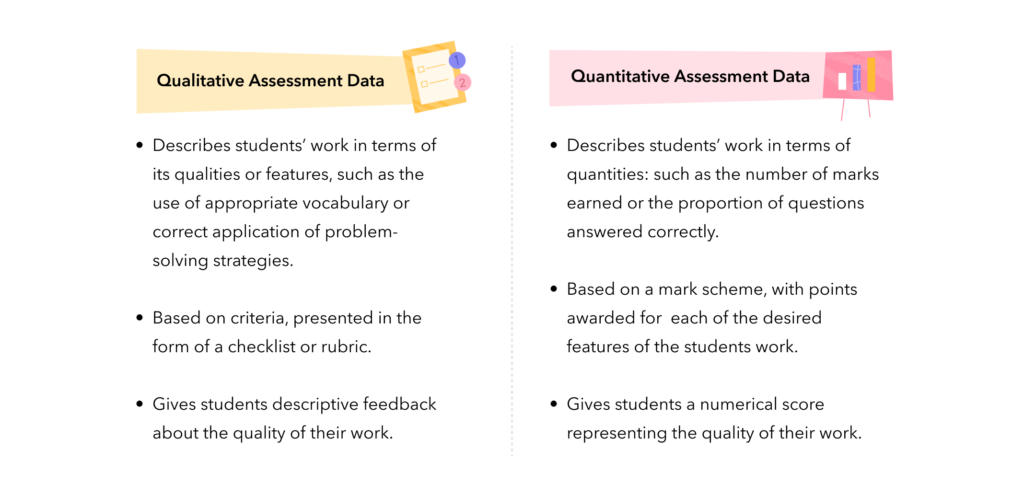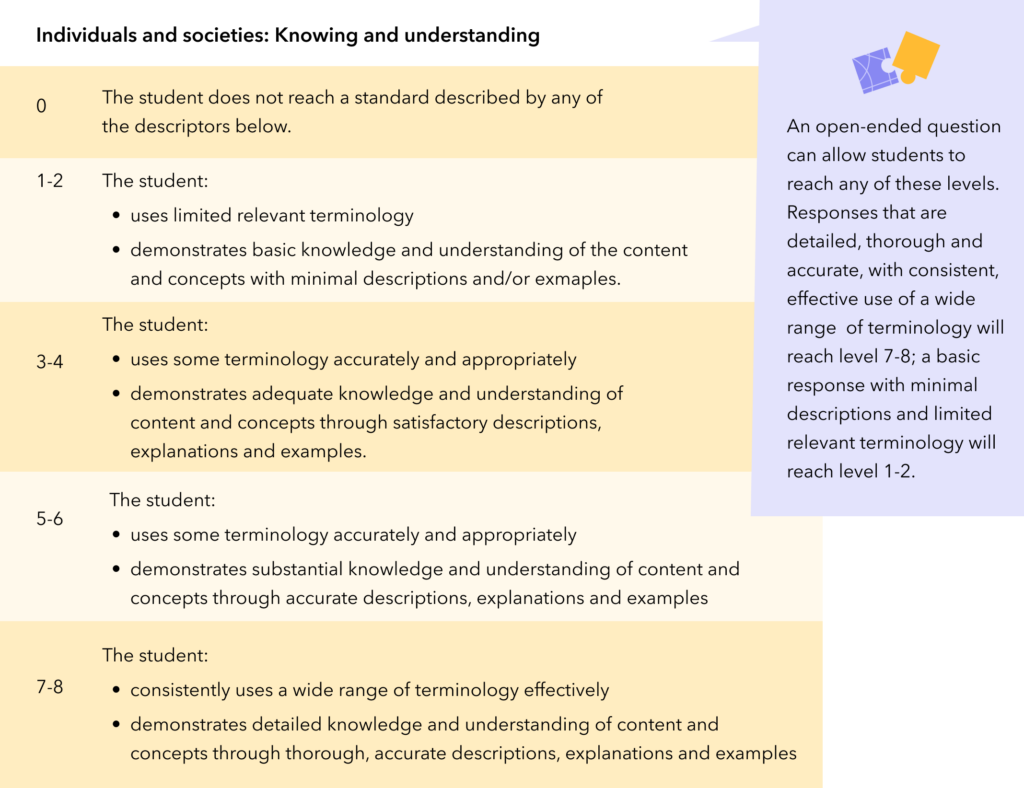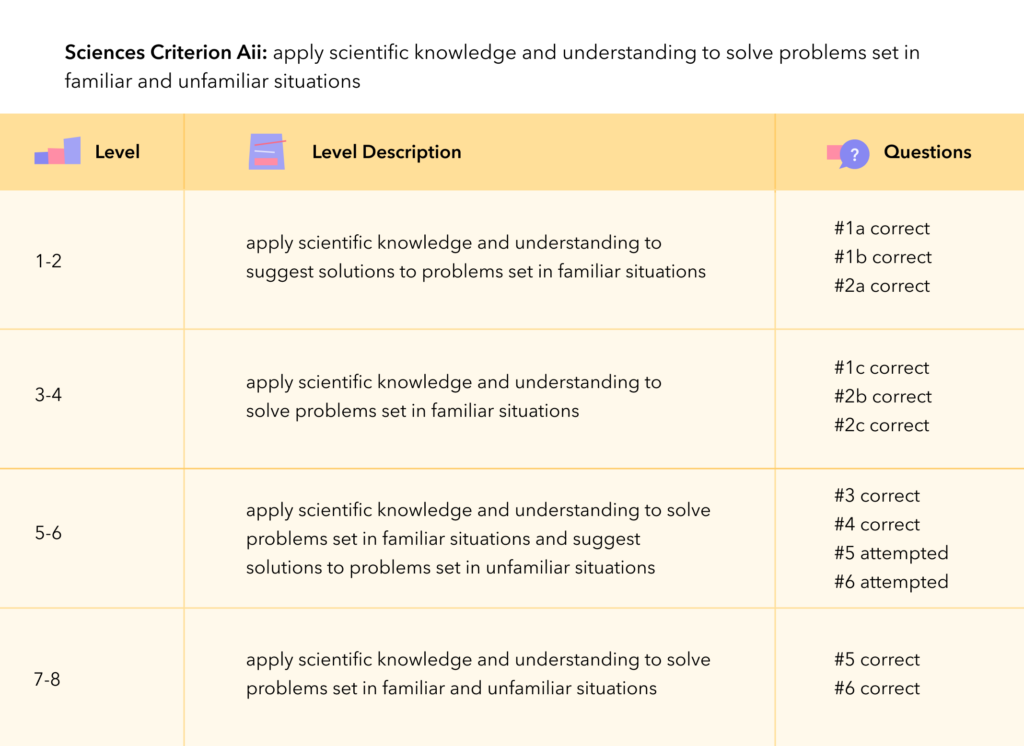One of the biggest challenges of introducing the MYP into schools is adapting to the MYP principles of assessment, particularly for schools where tests are widely used in summative assessment. Tests can be appropriate for summative assessment; however, tests in the MYP are a bit different than most other tests.
The key to understanding that difference is to consider the distinction between quantitative and qualitative assessment data.

Because assessment in the MYP is criterion-related – using descriptive criteria to monitor and assess students’ progress – assessment tasks, including tests, should be designed to gather qualitative data about students’ achievement and to give them qualitative feedback about their progress.
Designing the test
In order to provide accurate and detailed qualitative measures of student performance, assessment tasks have to be designed to give students the opportunity to show different depths of understanding that correspond to the levels of achievement in the rubric.
- In some cases, the same question can elicit responses with different degrees of sophistication in the response. For example:

- In other cases, the test must be designed with different types of questions in order to allow students to reach different levels of achievement. For example:

Marking
Because the design of tests in the MYP is a bit different, marking is different, too. Rather than developing a mark scheme with a certain number of marks awarded for each question, tests in the MYP are assessed using one of the MYP rubrics. There are a few ways to do this:
- Use task-specific clarifications to indicate which questions, or which features of specific questions, correspond to each level of achievement in the rubric. For example:

Award the highest level of achievement at which students consistently answered the questions corresponding to that level correctly. Note that students do not have to answer every question for that level correctly. For example, a student who correctly answered most of the level 7-8 questions could achieve a level 7.
- Organize the test so that each section corresponds to each level of achievement. Award the highest level of achievement at which students consistently answered the questions in that section correctly.
- Use the objective and strands in the instruction for an open-ended response and then use the corresponding rubric to assess open-ended responses on tests. For example:

Because quality is more important than quantity, the test should be designed to include a few open-ended questions so that students have time to develop a detailed, thorough response.




